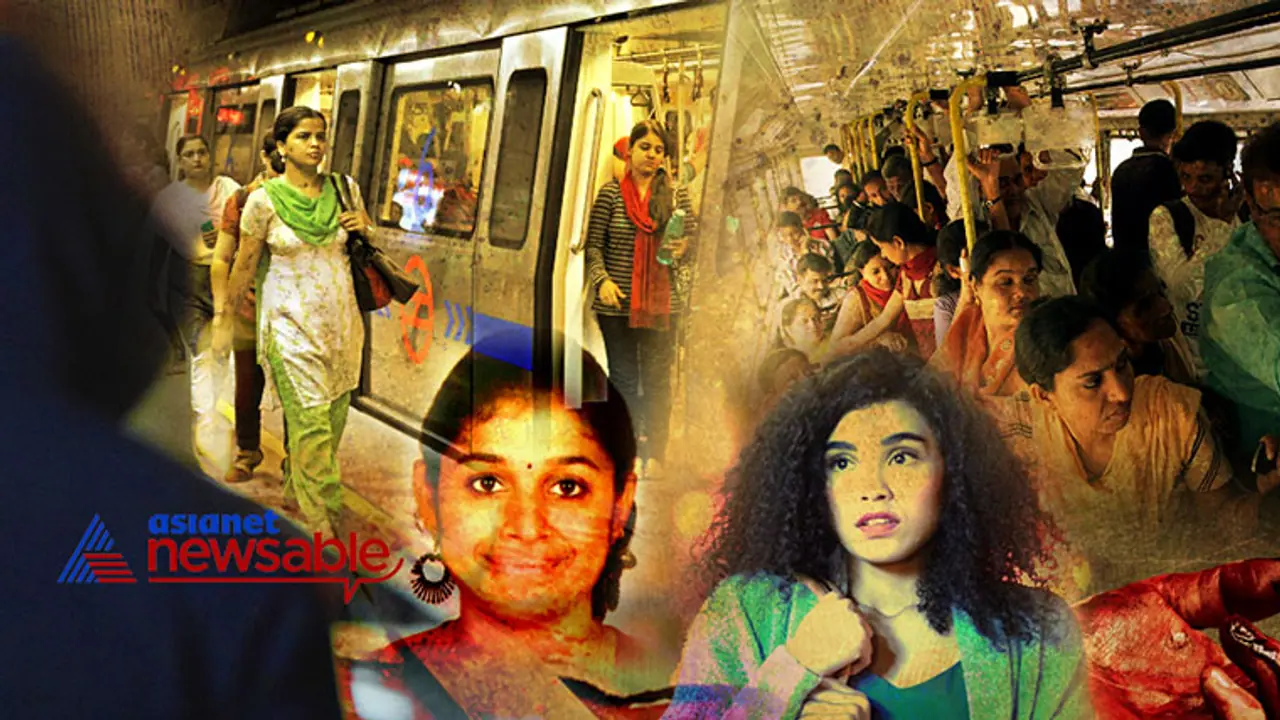What are we to make of sexual violence and harassment on busses and other forms of public transport Women now certainly enjoy greater mobility, but their freedom to move and claim new opportunities comes at a cost
On June 24 last year, young Infosys techie Swathi S lay dead at the busy Nungambakkam Railway Station in Chennai after her stalker Ramkumar stabbed her repeatedly with a sickle. No one intervened.

For over two hours, her body lay there on the platform for onlookers to see, covered in white sheet as the trains and the world passed her by. No railway police personnel, no passenger...no one bothered to do anything for a long time.

Swathi’s parents believe had police been there, had someone intervened in time, their daughter may have had a chance to live and the attacker would have been arrested then and there. Swathi’s parents A Ranganayaki and K Santhanagopalakrishnan have filed a writ petition in the Madras High Court against the Southern Railway police’s negligence.
Women being raped, women being assaulted, harassed and killed should be staple fare for us now. It has been reported so often that a strong pattern emerges in these cases. Most of the horrific cases have occurred in or near some mode of public transport.
Just ask the men and women about what they expect from public transport and you will find while most men will say ‘speed’, women will always harp on the ‘safety’ part. That’s how scary it is.
It is because sexual abuse, harassment, assault is something that women, young girls, children are facing daily in public transport. It is regardless of state, zone or location – vulgar language, sexist comments, eve-teasing, stalking, being photographed against their consent, being stared at and masturbated upon, are some of the forms of sexual harassment women undergo.
What can you do when a sleazy man slides his hands on your thighs, or tries to grab your breast mid-air? Where do you go? What can you do when the same thing happens in the bus, in a taxi, in the train, at the bus stop?
Scream, shout, put up a fight, call the attention of onlookers? Do you think Nirbhaya did not do that?
Onlookers, like the name says, just stand and look on. And then the inevitable comment comes – What was she doing there? She should not have been there at that time – day or night. So when can a woman be out? How should she go on and about her work, or her life? If the only thing she knows is fear then women will just stop going to places, to work, fearing what she will be subjected to while going to work. Not everyone can afford private transport in metropolitan cities or small towns.
Women tend not to report the majority of incidents, sometimes amid concerns that they would not be taken seriously. They fear the shame, humiliation that will be heaped on them were to complain. It is this very fact that the perpetrators take advantage of.
The solution most governments have found is to have women-only coaches on trains, have women-only trains, women-only busses, women-only cab drivers etc. This means women can only feel safe with other women around them? But that cannot be an ideal solution. And nor can CCTV cameras be the be all and end all of things.
Remember 23-year-old Soumya on that Ernakulam-Shoranur passenger train on February 1, 2011. Her rapist and murderer Govindachamy went to the ladies compartment where she was, robbed and attacked her. Soumya’s body was later found in the forest. Do you still say women-only transport is the solution?
In February this year, a 30-year-old woman from Meghalaya complained she was assaulted by three men on a Kerala-bound train. In her complaint to the Thampanoor railway police, the woman – who works as a domestic help in Thiruvananthapuram – recounted how three Malayali men tried to grab her while she was asleep in the AC compartment and other passengers remained mute spectators.
In September 2016, a Bengaluru woman was allegedly harassed by an Ola Cab driver, who asked her uncomfortable questions, including whether she was a housewife or a working woman, whether she drank or smoked, and what she was doing out late in the night. He then refused to take her home, missed a few turns, locked her inside the car and bought two cigarettes, forcing her to smoke one.
Public transport gives perpetrators an easy escape route, taking advantage of the rush or the seclusion, most get away.
In most cases the women are trapped – a moving bus, train, airplane, cab, where does it offer the scope for a person to run? You have to wait and till that time, a woman is easy prey.
So as usual the onus comes on to every individual every woman to take care of themselves and have the means to do that; it’s about the government making sure the policies they implement for women’s safety are seen through and not just respond to such incidents but in time, also prevent them; it is also about the police not dismissing or taking lightly such cases of assault because in taking swift action against such perpetrators they are empowering women.
And last and most important part of the responsibility lies with fellow citizens, because not everywhere can you have a male friend protect you, a policeman swoop in to stem the rot or an app to help you. People should be trained at their workplaces, sensitised in their homes and on public transport that when they see such an act they should respond rather than stay mute. When the public refuses to take such incidents lying down and intervenes effectively then only will sexual deviants, perpetrators think twice before having the guts to rape and kill women.
